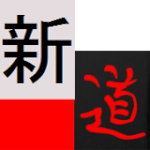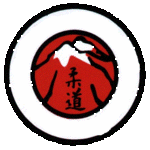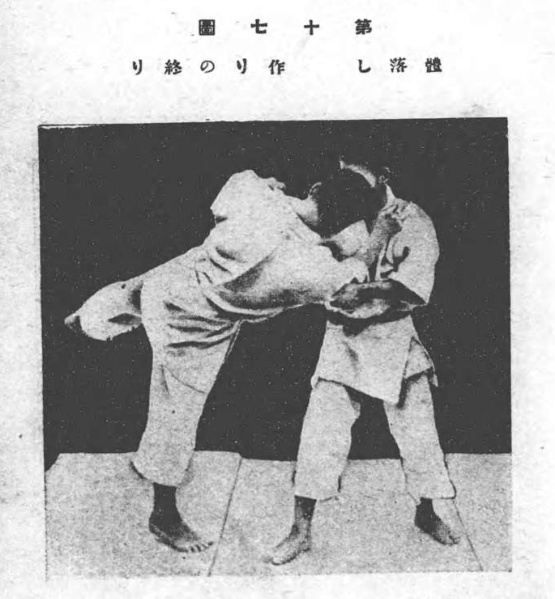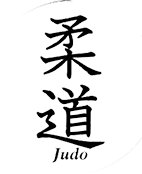+8
johan smits
Cichorei Kano
beyondgrappling
tafftaz
Fritz
finarashi
Taiobroshi
budoitaly
12 posters
reverse seoi nage or not?

budoitaly- Posts : 42
Join date : 2013-01-04
- Post n°1
 reverse seoi nage or not?
reverse seoi nage or not?
this is reverse seoi nage or Sumi otoshi? 

budoitaly- Posts : 42
Join date : 2013-01-04
- Post n°2
 Re: reverse seoi nage or not?
Re: reverse seoi nage or not?
https://www.facebook.com/photo.php?v=323574387765481&set=vb.202208826543628&type=2&theater
Another reverse morote seoi nage! or Sumi Otoshi?
Another reverse morote seoi nage! or Sumi Otoshi?

Taiobroshi- Posts : 63
Join date : 2012-12-27
Age : 33
Location : New York
- Post n°3
 Re: reverse seoi nage or not?
Re: reverse seoi nage or not?
It has no aspect of carrying the opponent on the back, so it can't be a "seio" anything. It doesn't throw to the corner, so it can't be "sumi" anything. The technical definitions implied by the names are important (well, except yama arashi), especially if one hopes to emulate or teach a technique. Waza are taught most poorly when teachers try to emulate a form instead of a principle- this a perfect example. Just because tori drops to his knees like in what people call "seionage" (which usually isn't actually seionage at all), doesn't mean it's the same technique. So what is it?
Clearly it's a te waza with an "otoshi" aspect. If you want to give it a name based on the gokyo, it depends on how far you're willing to stretch you definition of that particular throw (which could be wrong in the first place). It's much easier to exclude possibilities, as you can see. What would I call it, if I had a gun to my head? Probably a tai otoshi. I remember a thread from the old JF that showed some pictures of a classical jujutsu tai otoshi that didn't use the leg and threw to the rear, and when I am taught tai otoshi I am reminded that the leg is not all that important to the success of the throw when compared to the hand action and the dropping of the body. The entry is different, but for naming purposes it doesn't really matter as long as the principle accords. The benefit of this is that what's driving the technique is always clear and on the official syllabus we avoid long, convoluted names (or names that say nothing about what the technique does, like BJJ's "kimura"). On the other hand, when the names cover such a wide variety of techniques the judo dialogue necessarily includes an explanation of that particular variation since people are more likely to think of a standard manifestation of said technique. For example, the details of sode guruma jime from the back and from the top are totally different, even if the choking action is the same.
In short, the naming system is imperfect and I like to hear myself talk! Forgive me if you're a dan grade or something and wanted a quick, poll-like answer. My judo upbringing included quizzing on names, so I'm very sensitive to this topic.
Forgive me if you're a dan grade or something and wanted a quick, poll-like answer. My judo upbringing included quizzing on names, so I'm very sensitive to this topic.
Clearly it's a te waza with an "otoshi" aspect. If you want to give it a name based on the gokyo, it depends on how far you're willing to stretch you definition of that particular throw (which could be wrong in the first place). It's much easier to exclude possibilities, as you can see. What would I call it, if I had a gun to my head? Probably a tai otoshi. I remember a thread from the old JF that showed some pictures of a classical jujutsu tai otoshi that didn't use the leg and threw to the rear, and when I am taught tai otoshi I am reminded that the leg is not all that important to the success of the throw when compared to the hand action and the dropping of the body. The entry is different, but for naming purposes it doesn't really matter as long as the principle accords. The benefit of this is that what's driving the technique is always clear and on the official syllabus we avoid long, convoluted names (or names that say nothing about what the technique does, like BJJ's "kimura"). On the other hand, when the names cover such a wide variety of techniques the judo dialogue necessarily includes an explanation of that particular variation since people are more likely to think of a standard manifestation of said technique. For example, the details of sode guruma jime from the back and from the top are totally different, even if the choking action is the same.
In short, the naming system is imperfect and I like to hear myself talk!

finarashi- Posts : 507
Join date : 2013-01-11
Location : Finland
- Post n°4
 Re: reverse seoi nage or not?
Re: reverse seoi nage or not?
My money is also on otoshi but sumi-otoshi

Fritz- Posts : 121
Join date : 2013-01-16
- Post n°5
 Re: reverse seoi nage or not?
Re: reverse seoi nage or not?
Kind of Sumi-Otoshi, i would say...

tafftaz- Posts : 330
Join date : 2012-12-31
Age : 59
Location : Wales, UK
- Post n°6
 Re: reverse seoi nage or not?
Re: reverse seoi nage or not?
Variation of osoto otoshi maybe?

beyondgrappling- Posts : 73
Join date : 2013-01-26
- Post n°7
 Re: reverse seoi nage or not?
Re: reverse seoi nage or not?
My mate is super good and this technique.
https://www.youtube.com/watch?v=t2bn4Eh2e_0
https://www.youtube.com/watch?v=t2bn4Eh2e_0

Cichorei Kano- Posts : 1948
Join date : 2013-01-16
Age : 864
Location : the Holy See
- Post n°8
 Re: reverse seoi nage or not?
Re: reverse seoi nage or not?
Taiobroshi wrote:It has no aspect of carrying the opponent on the back, so it can't be a "seio" anything. It doesn't throw to the corner, so it can't be "sumi" anything. The technical definitions implied by the names are important (well, except yama arashi), especially if one hopes to emulate or teach a technique. Waza are taught most poorly when teachers try to emulate a form instead of a principle- this a perfect example. Just because tori drops to his knees like in what people call "seionage" (which usually isn't actually seionage at all), doesn't mean it's the same technique. So what is it?
Clearly it's a te waza with an "otoshi" aspect. If you want to give it a name based on the gokyo, it depends on how far you're willing to stretch you definition of that particular throw (which could be wrong in the first place). It's much easier to exclude possibilities, as you can see. What would I call it, if I had a gun to my head? Probably a tai otoshi. I remember a thread from the old JF that showed some pictures of a classical jujutsu tai otoshi that didn't use the leg and threw to the rear, and when I am taught tai otoshi I am reminded that the leg is not all that important to the success of the throw when compared to the hand action and the dropping of the body. The entry is different, but for naming purposes it doesn't really matter as long as the principle accords. The benefit of this is that what's driving the technique is always clear and on the official syllabus we avoid long, convoluted names (or names that say nothing about what the technique does, like BJJ's "kimura"). On the other hand, when the names cover such a wide variety of techniques the judo dialogue necessarily includes an explanation of that particular variation since people are more likely to think of a standard manifestation of said technique. For example, the details of sode guruma jime from the back and from the top are totally different, even if the choking action is the same.
In short, the naming system is imperfect and I like to hear myself talk!Forgive me if you're a dan grade or something and wanted a quick, poll-like answer. My judo upbringing included quizzing on names, so I'm very sensitive to this topic.
Some good logical reasoning here, and I am only supplementing the points he has raised.
It cannot possibly be seoi-nage, and it isn't seoi-otoshi either, at least not in the way it is performed in both clips. Sumi-otoshi is impossible. Why ? From a biomechanical point of view sumi-otoshi has some specific characteristics, namely that it is a lever throw in which the fulcrum is the friction between uke's feet and the tatami; that is at least the case in a pure sumi-otoshi. Sumi-otoshi strongly relies on kuzushi. In the throw shown the fulcrum seems to be at the height of the shoulder where the opponent's shoulder is blocked, at least in the way it is shown in the both clips. It is hard to say, it seems though that if minimal contact is held at the shoulder height that it is possible to perform it with the fulcrum under uke's feet too.
Furthermore, this 'technique' can be performed in a way that it is questionable whether it is really a 'throw' and more a pulling down to the ground. If done very abruptly and explosively it often mimics a throw, though it isn't really a throw. It depends.
The fact that is throw to behind and is the result of an large movement it could be considered 'o-soto'. Normal jûdô throws typically involve a turn from tori that is either between 0°-90° or 90-180°. They may go over 180° as conclusion of the kake-phase (the typical sustained rotation towards the left), but those standard techniques still really are performed at the 180° position.
In a technique such as the one that is the topic of this thread, you really get an approx. 360° position, essentially meaning that the end position is identical to the starting position, at least from a vectorial point of view. I therefore consider this turn not the throw itself, but really a type of entry separate from the throw, but in this case this technique is difficult to perform without that entry. Nevertheless, it seems to me that to categorize the throw itself, one merely has to consider the technique similar to as if that 360° was not performed.
Taiobroshi makes a reference to classical jujutsu. That is astute, BUT you have to be careful. You see, the thing is that many judo techniques do exist in classical jujutsu, but oftentimes you cannot use this to deduct its judo name from. For example even in a jujutsu school as close to judo as Tenjin Shin'yo-ryu, there are techniques that occur in judo, but that have a name that also exists in judo, but which in Kodokan judo is an entirely different technique. Ashi-barai in TSYR is NOT ashi-barai in Kodokan judo, but in fact is Kodokan judo's ... ashi-guruma ! In other words, the heuristic exploration of jujutsu is mainly useful to trace the origin of a technique, its modification, where Kano (or another judo master) got it, and in some cases, but not all of them, its name.
Given that the technique we are currently discussing is a fairly recent technique where chances that those who have introduced it almost likely have not prior knowledge of classical jujutsu, I fear that such exploration won't help us much forward. The techniques that were introduced into judo the last 30 years came from sambo, or other derivations or personal input, but not anymore from classical jujutsu.
By the way, the 'se' 背 in 'seoi' also can mean 'reverse' in the sense of "reverse side" without necessarily having to refer to 'spin'. From that fact, one could argue it is not absolutely so that in seoi-otoshi the opponent actually has to be carried on the back. Those who like to play the devil's advocate could then of course start arguing that if so, then the same should apply to seoi-nage, only ... seoi-nage requires projecting or throwing away the opponent which is kind of difficult without the use of a serious fulcrum and lever action as accomplished by the act of carrying on the back.
I can see why someone would propose tai-otoshi, but there are objections, although tai-otoshi is an odd case since scientifically the two main forms are performed differently, one being with the fulcrum the fiction under uke's feet (the no-contact version of tai-otoshi), the other one having the fulcrum at the point where tori's leg makes contact with uke (the contact form of tai-otoshi). In tai-otoshi though the throw is accomplished mainly by the body's turn in combination with kuzushi, but in the current throw it really is the pulling down to back side.
Some of these techniques such as the one in the clip are similar yet different. Rondador used to do something similar, but it was also different, namely a reverse-grip tsuri-komi-goshi, no not simply a sode-tsuri-goshi. Her technique in any case was different from what is shown in the clips here.
The main objection in the current clip against the name seoi-otoshi is that it is deliberate throw to the back side whereas seoi-otoshi is to the front. In other words, I am saying, OK, you can give up seoi-otoshi, but the reason isn't really because the opponent is not "carried on your back".
The only throw currently known in Kodokan judo where there is no such major violation of conditions is o-soto-otoshi. The question then becomes IF one meets o-soto-otoshi conditions if tori's legs remain next to those of uke and no leg is used to throw uke ...
In any case, the Kodokan's naming conventions are inconsistent when it comes to "o-soto". "o-soto" in "o-soto-guruma" is a much larger movement that goes much further outside than in "o-soto-gari", whereas in "o-soto-makikomi" the "o-soto" now mainly seems to indicate that the movement simly is larger than "soto-makikomi"; moreover, "soto-makikomi" is a throw to the front, whereas "o-soto-gari" and "o-soto-guruma" are to the back. This shows that the "o-soto" domination certainly leaves a lot of room for how precisely it refers to a movement. In any case, in o-soto-otoshi, no indication is given in the name what the legs would do other than that you throw coming in from the outside of the body, and downwards. It does not say what the leg does or if it is even necessary, unlike in o-soto-gari where clearly a reaping action is indicated. Then again, judo name giving isn't all logic and even if the name does not indicate such, it does not mean that it isn't implied. This is probably because throws have various origins and were imported into judo at various times, and their names decided by various people.

johan smits- Posts : 122
Join date : 2013-01-22
- Post n°9
 Re: reverse seoi nage or not?
Re: reverse seoi nage or not?
It reminds me of eri nage from Tenjin Shinyo ryu (although in that ryu it is done differently.)
Actually a mix of eri nage and kinu katsugi.
Several traditional jujutsu ryu use techniques like it. Grab the eri, get behind them and throw them.
Happy landings.
Actually a mix of eri nage and kinu katsugi.
Several traditional jujutsu ryu use techniques like it. Grab the eri, get behind them and throw them.
Happy landings.
Last edited by johan smits on Wed Mar 27, 2013 7:37 am; edited 1 time in total

cuivien- Posts : 118
Join date : 2013-01-15
Age : 40
Location : Norway
- Post n°10
 Re: reverse seoi nage or not?
Re: reverse seoi nage or not?
for reference purposes, here is tai-otoshi that Taiobroshi was talking about, as demonstrated in Arima (taishô 14):

As for the possible explanation given by CK, I guess it depends on which element(s) one must have in place in order to call something ô-soto-otoshi...
I mean, clearly it's a drop, but what kind...

As for the possible explanation given by CK, I guess it depends on which element(s) one must have in place in order to call something ô-soto-otoshi...
I mean, clearly it's a drop, but what kind...

Cichorei Kano- Posts : 1948
Join date : 2013-01-16
Age : 864
Location : the Holy See
- Post n°11
 Re: reverse seoi nage or not?
Re: reverse seoi nage or not?
cuivien wrote:for reference purposes, here is tai-otoshi that Taiobroshi was talking about, as demonstrated in Arima (taishô 14):
As for the possible explanation given by CK, I guess it depends on which element(s) one must have in place in order to call something ô-soto-otoshi...
I mean, clearly it's a drop, but what kind...
Yes, that's tai-otoshi performed without using the leg as a fulcrum and by placing the fulcrum instead under uke's feet. This throw is still to the front, but is shown here with uke's body already in the process of turning. Even when one implements the throw as much to the side as possible, tori's throw of his own upper body causes uke to be turned and thrown to the front. This is fundamentally different from the throw shown in the clip where uke is not thrown as a result of tori's upper body, but is pulled down into the ground, and this directly.

Cichorei Kano- Posts : 1948
Join date : 2013-01-16
Age : 864
Location : the Holy See
- Post n°13
 Re: reverse seoi nage or not?
Re: reverse seoi nage or not?
DougNZ wrote:Shiho nage (!)
Kôdôkan jûdô does not contain any throw called "shihô-nage". Some other budô such as aikidô do, but as I have pointed out, that is of little relevance since the same technique in a different art may have a totally different name, while the name of the one art may also exist in the other though referring to a different technique.

DougNZ- Posts : 405
Join date : 2013-01-28
- Post n°14
 Re: reverse seoi nage or not?
Re: reverse seoi nage or not?
Cichorei Kano wrote:DougNZ wrote:Shiho nage (!)
Kôdôkan jûdô does not contain any throw called "shihô-nage". Some other budô such as aikidô do, but as I have pointed out, that is of little relevance since the same technique in a different art may have a totally different name, while the name of the one art may also exist in the other though referring to a different technique.
Yes, aware of that. The example in the clip looks very much like it is based on a 'borrowed' technique to me.

Cichorei Kano- Posts : 1948
Join date : 2013-01-16
Age : 864
Location : the Holy See
- Post n°15
 Re: reverse seoi nage or not?
Re: reverse seoi nage or not?
DougNZ wrote:Cichorei Kano wrote:DougNZ wrote:Shiho nage (!)
Kôdôkan jûdô does not contain any throw called "shihô-nage". Some other budô such as aikidô do, but as I have pointed out, that is of little relevance since the same technique in a different art may have a totally different name, while the name of the one art may also exist in the other though referring to a different technique.
Yes, aware of that. The example in the clip looks very much like it is based on a 'borrowed' technique to me.
I don't know where and when this technique first popped up in jûdô. It probably already did loom somewhere before it entered the international contest scene. It is one of those things that in a biomechanical-analytical way is sometimes referred to as "chaotic techniques". Usually these spontaneously evolve from a technique applied by a contest judoka rather than being the result of careful exploration and loan from other disciplines, but then again, nothing, or almost nothing is entirely impossible.

afulldeck- Posts : 377
Join date : 2012-12-30
- Post n°16
 Re: reverse seoi nage or not?
Re: reverse seoi nage or not?
Why not reverse ude gaeshi?

Cichorei Kano- Posts : 1948
Join date : 2013-01-16
Age : 864
Location : the Holy See
- Post n°17
 Re: reverse seoi nage or not?
Re: reverse seoi nage or not?
afulldeck wrote:Why not reverse ude gaeshi?
Obvious reasons. As I pointed out in my first message in this thread a first question is whether this is actually a throwing technique. Sure, the other athlete may fall flat on his back, but that is not enough for it to be a throw. In ude-gaeshi the opponent ends up flat on his back coming from a standing position. Now, the IJF clearly awards scores to this 'thing', but then again the IJF does lots of nonsensical things.
Secondly, I would strongly recommend for once and for all to get rid of this 'reverse'. That is just wrong terminology, like there have been so many nonsensical terms crafted by Westerners. 'Reverse' or 'ura' means something very specific in Kôdôkan jûdô throws, and that is certainly not it. Throwing someone to the left or to the back instead of to the other side does not make it 'reverse'. Sode-tsuri-komi-goshi is not a "reverse tsuri-komi-goshi". Reverse means to throw to your own back side behind you, or the whole of techniques to "reverse throw", id est "kaeshi-waza".
In ude-gaeshi, which is a "skillful entry into newaza coming from tachi-waza", the arm of the opponents is overpronated, hence the gaeshi, although really this is inconsistent with other judo-terminology, since a "gaeshi twist" generally refers to "oversupination" whereas "overpronation" is termed "hineri", but anyhow, there are more inconsistencies in Kôdôkan jûdô, although I don't think we have to feed those.

aspenrebel- Posts : 38
Join date : 2013-03-04
- Post n°18
 Re: reverse seoi nage or not?
Re: reverse seoi nage or not?
Isn't that what's his name, right here in Braintree, Massachusetts, USA? Phoenix Judo Club? I can't think of his name right now. Looks like him. He's a small guy, but very fast.budoitaly wrote:this is reverse seoi nage or Sumi otoshi?

aspenrebel- Posts : 38
Join date : 2013-03-04
- Post n°19
 Re: reverse seoi nage or not?
Re: reverse seoi nage or not?
Well, actually, it starts off similar to one of my favorite techniques.... Ude Gaeshi.... but he doesn't execute it and finish it off in that way for it to be Ude Gaeshi. Oh!! But he turns the opposite way you would if you were to execute Ude Gaeshi. Oh well, nevermind!!budoitaly wrote:this is reverse seoi nage or Sumi otoshi?

